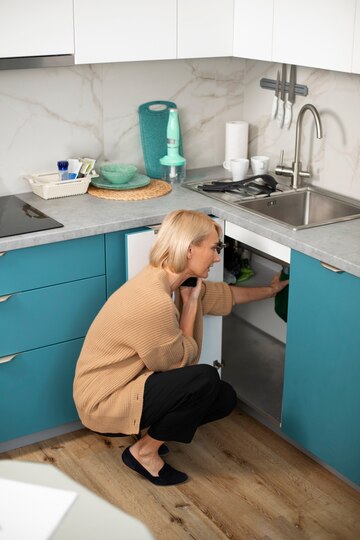As the saying goes, \”an ounce of prevention is worth a pound of cure.\” In this second installment of our series on home maintenance tips to safeguard your home from water damage, Experts In Your Home emphasizes that taking preventive measures can save you from potentially costly water damage.
Most instances of household floods stem from plumbing or appliance failures, or a combination of both. For example, a burst dishwasher line or hose can inundate a kitchen with gallons of water, causing extensive damage to hardwood floors or kitchen cabinets.
If you file an insurance claim for such damage, your insurer might deny it if they can demonstrate that the issue persisted for an extended period without repair.
Often, overlooking signs of excessive moisture and impending water damage in the bustling hub of the kitchen is not a result of neglect but rather a consequence of daily activity.
Let our licensed Chico plumbers help you identify and address potential trouble spots in your kitchen with these home maintenance tips, sparing you from emotional and financial distress.
Under the Dishwasher Regularly check for even minor leaks under the dishwasher, indicating loose connections or a leaking water hose, and repair or replace as needed. Inspect the water supply hose for leaks and replace immediately if any are found. Clean the drain line regularly to prevent overflow into the sink. Check the main filter for clogs, as a blocked filter can cause incomplete drainage after use. Under the Sink Inspect the trap for drips, a sign of potential drain problems, and promptly repair or call for assistance. Check surrounding areas for moisture or water stains, sealing any holes in the wall with caulk. Inspect the floor beneath plumbing for soft spots or stains, indicating leaks that require immediate repair. Around the Sink Check for steady drips when the faucet is fully turned off and promptly repair any leaks. Inspect sink seals for cracks or looseness, replacing them as needed. Ensure broken or missing countertop tile or grout near the sink is not due to a leak around the sink. Behind the Refrigerator Inspect thoroughly for moisture and leaks after moving the refrigerator away from the wall, calling for assistance if needed. Check the supply line to the icemaker for leaks and replace if necessary. Under the Range/Oven Remove the bottom drawer and inspect for moisture or mold, seeking professional assistance if the source of the problem is not apparent. Exhaust Fan Test the fan to ensure proper operation and replace or update wiring as needed. Check that the fan vents to the outdoors and inspect for dust, food particles, mildew, or mold, keeping it clean for optimal function.

